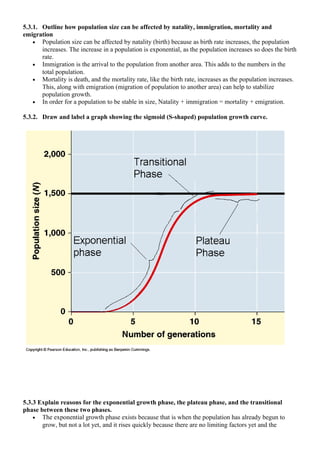This document defines key terms related to ecology and evolution, including species, population, community, ecosystem, food chains, and trophic levels. It explains that autotrophs produce their own food while heterotrophs consume other organisms. Food webs are more complex than chains and support ecosystems even if one species is removed. Energy enters ecosystems through sunlight but nutrients must be recycled. The document also outlines the greenhouse effect and enhanced greenhouse effect due to human activities like burning fossil fuels. Finally, it discusses population growth and limiting factors, and defines evolution as cumulative heritable changes in populations over time.











